Marc Abrahams's Blog, page 316
July 27, 2015
Is sarcasm the highest form of intelligence?
Well, is sarcasm the highest form of intelligence? According to a new study in the journal Organizational Behavior and Human Decision Processes, it may be.
The study, called “The highest form of intelligence: Sarcasm increases creativity for both expressers and recipients“, was published by Li Huang, Francesca Gino, and Adam Galinsky.
[CAUTION: A different, also recent, study indicates that walking increases creativity. Be careful about expressing sarcasm while walking — the combination could, perhaps, induce unpredictable levels of creativity.]
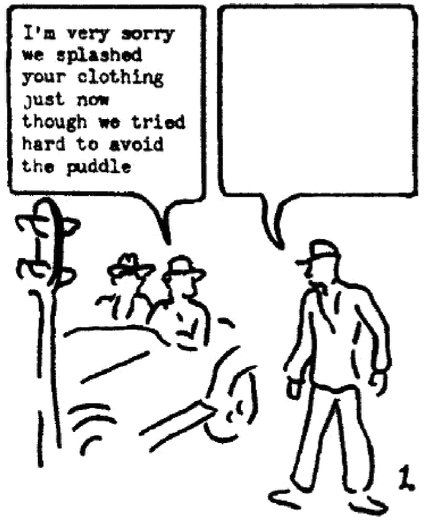
The contents of Appendix A of the article.
As with all other recent papers in journals by world-renowned publisher Elsevier, the study has five self-reported highlights:
(1) Sarcasm is an instigator of conflict but also a catalyst for creativity.
(2) General forms of sarcasm promote creativity through abstract thinking for both expressers and recipients.
(3) Expressing sarcasm to or receiving sarcasm from trusted others increases creativity without elevating conflict.
(4) We manipulated sarcasm via a simulated conversation task and a recall task.
(5) We employed three different creativity measures and a well-established measure of abstract thinking.
I feel like this study has justified the last 39 years of my existence. (Thanks to investigator Taha Yasseri for pointing us to this study.)
Note: Absolutely no sarcasm was employed in the writing of this blog entry.

‘Malaforms’ – pronunciation through the mangle
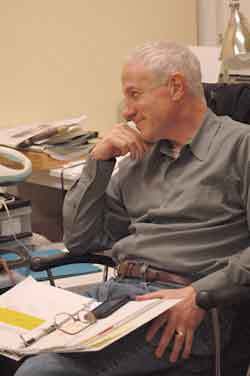 “You won’t find the word ‘malaforms’ in the dictionary, but it most certainly ought to be there.” – explains Scott Kaiser, the Director of Company Development at the Oregon Shakespeare Festival in Ashland.
“You won’t find the word ‘malaforms’ in the dictionary, but it most certainly ought to be there.” – explains Scott Kaiser, the Director of Company Development at the Oregon Shakespeare Festival in Ashland.
“What do I mean by a malaform? A malaform is the unintended creation of a new word by a speaker who has mangled the pronunciation of a perfectly good existing word.”
He not only coined the word, but also provides an explanation of how they are distinguished from malaprops (or malapropisms).
“[…] where a malaprop is the imperfect use of perfectly good words, a malaform is the mangling of perfectly good words into imperfect ones.”
A quasi-contemporary example is provided:
“George W. Bush: ‘They misunderestimated the compassion of our country. I think they misunderestimated the will and determination of the commander-in-chief, too.’
(He means underestimated)”
See Mr. Kaiser’s essay on the subject of malafroms in: Voice and Speech Review, Volume 5, Issue 1, 2007, Rebusing the Fartuous Word: Malaforms and Malaprops in Shakespeare

July 26, 2015
They Remember Memorable Music
Who remembers memorable music? This study examines one aspect of that question:
“A Song to Remember: Emerging Adults Recall Memorable Music,” Julia R. Lippman and Dara N. Greenwood [pictured here], Journal of Adolescent Research, vol. 27, no. 6 (2012): 751-774.
BONUS: Professor Greenwood’s “Joking in the face of death: A terror management approach to humor production”

July 25, 2015
Continuing need for the ‘medical effects of sword-swallowing’ study
Jennifer Weiss, writing in the Wall Street Journal, explores the continuing need for the prize-winning study “Sword-Swallowing and Its Side Effects“. The study’s authors, Brian Witcombe and Dan Meyer, were awarded the 2007 Ig Nobel Prize for medicine. Witcombe and Meyer’s Ig Nobel acceptance speech is documented in this brief video:
The Wall Street Journal article says, in part:
Students Take a Stab at Sword Swallowing
Sword swallowers are on edge as TV and the Internet spur neophytes to guide sharp objects down their throats
Don’t try this at home, the master of ceremonies of the Coney Island Circus Sideshow cautioned, and with good reason.
One performer was reclining on a bed of spikes. Another danced on a pile of broken glass. And his own “human blockhead” act involved hammering a nail into his nasal cavity.
Then there was Betty Bloomerz, who wore a black skirt and fishnet stockings as she moved playfully in time to Louis Prima’s swing classic “Sing, Sing, Sing.”
As about 30 spectators looked on in a small Brooklyn theater, Ms. Bloomerz tilted her head back, placed a foot-long blade into her mouth and, using her tongue, began to move it in time to the music. She let the sword drop downward until its metallic gold hilt came to rest near her bright red lips. Then she pulled it out with a flourish.
Point taken….
A study [Dan] Meyer co-wrote with Brian Witcombe, a British radiologist, found that “sword swallowers run a higher risk of injury when they are distracted or adding embellishments to their performance.”
The authors got information for their research from 46 practitioners. The study was published in the British Medical Journal in 2006 under the title “Sword swallowing and its side effects.”

Candy elasticity as a sticky, gooey innovation in economics
Economics, candy, and politics have found a new way to mix. This study makes that, at least, clear:
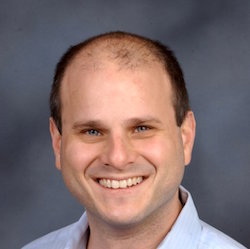 “Candy Elasticity: Halloween Experiments on Public Political Statements,” Julian Jamison and Dean Karlan [pictured here], Economic Inquiry, epub June 15, 2015. (Thanks to Sendhil Mullainathan for bringing this to our attention.) The authors, at the Consumer Financial Protection Bureau, Washington, DC, and Yale University, explain:
“Candy Elasticity: Halloween Experiments on Public Political Statements,” Julian Jamison and Dean Karlan [pictured here], Economic Inquiry, epub June 15, 2015. (Thanks to Sendhil Mullainathan for bringing this to our attention.) The authors, at the Consumer Financial Protection Bureau, Washington, DC, and Yale University, explain:
We conducted experiments during trick-or-treating on Halloween in a predominantly liberal neighborhood in the weeks preceding the 2008 and 2012 presidential elections. We decorated one side of a house porch with McCain material in 2008 (Romney material in 2012) and the other side with Obama material. Children were asked to choose a side, with half receiving the same candy on either side and half receiving more candy to go to the McCain/Romney side. This yields a “candy elasticity” of children’s political support. Results vary by age: children ages nine and older were two to three times more likely to choose the Republican candidate when offered double candy for voting Republican compared to when offered equal candy, whereas children ages eight and under were particularly sticky and did not waver in their choice of candidate despite the offer of double candy….
Children’s responses to the candy incentives varied by age, however. Younger children’s preference for Obama was sticky with respect to price, but older children’s preference for Obama was elastic. This result was first observed in 2008 and then successfully replicated in the 2012 experiment. We discuss several interpretations in the conclusion, including a differential response to symbolic versus monetary rewards, a parental-contamination story for the younger children, and the simplest possibility: that younger children just didn’t understand the task as much and so made the political choice they did understand.

July 24, 2015
The birth of live webcasting: The 1995 Ig Nobel Prize ceremony
The 1995 Ig Nobel Prize ceremony was one of the very first events to be webcast live. Robert T. Morris (who was notorious!), Trevor Blackwell, and Chris Small — all Harvard computer science grad students — engineered the webcast, with backing and encouragement from Professor Margo Seltzer. Today, Scott Kirsner profiles (for the BetaBoston web site) something else that Robert Morris and Trevor Blackwell were doing at that time:
Cambridge company born in Internet’s ‘big bang’ has lasting impact
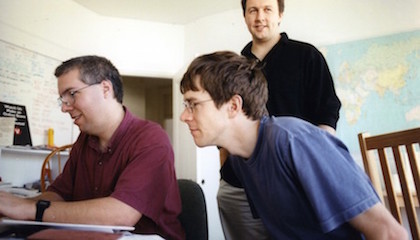
Viaweb co-founders (from left) Trevor Blackwell, Robert T. Morris, and Paul Graham in the company’s original office in Cambridge, circa 1995.
The summer of 1995 was a “big bang” moment for the Internet. Amazon.com switched on its servers two decades ago this month, and the founders of AuctionWeb — later renamed eBay — were busily preparing to launch their site on Labor Day weekend. Browser-maker Netscape went public in August. And a company you likely haven’t heard of, Viaweb, was founded in a triple-decker in Cambridge.
Viaweb never became as well-known as the others, but it played a pivotal role in the evolution of e-commerce, and the entrepreneurial ecosystem.
The founders were a trio of Harvard University computer science alumni and graduate students who saw that selling things on the Web was going to be huge, at a moment when most people were still apprehensive about typing a credit card number into a Web browser. They also realized that rather than businesses buying their own servers, connecting them to the Internet, and taking orders that way, “etailers” might want to pay someone else to operate their online catalogs, shopping carts, and cash registers….
Our repeated and continuing thanks to Robert, Trevor, Chris, and especially Margo, for making that first webcast happen. We have webcast the ceremony every year since. In the early years, our engineers (the aforementioned Robert, Trevor and Chris) had to invent/cobble major parts of the technology. In recent years, webcasting has of course become easier to do.
The 25th First Annual Ig Nobel Prize ceremony will be webcast live on Thursday, September 17, 2015. We hope you will watch (tickets to be physically in Sanders Theatre are almost sold out).
Here’s video of that historic 1995 Ig Nobel Prize ceremony (as you’ll see, it’s disjointedly edited):
Here’s our report, in the mini-AIR newsletter that went out shortly after that ceremony:
1995-10-05 Other Ig Nobelliana
1. This year's Ig Nobel Prize Ceremony was, as we had hoped,
televised live the Internet MBONE facility. We were pleased to
hear from people in a number of countries who witnessed the events
as they folded and unfolded. The unfortunate part was that the
ethernet cable into the hall was installed only two days before
the ceremony, too late for us to get out a special issue of mini-
AIR in time to notify most of you. Next year, all the technical
aspects should be in place in plenty of time.
2. The theme of this year's ceremony was "DNA, the stuff of life
and legend." DNA was celebrated throughout the evening in a
variety of ways by everyone from 12-year old Kate Eppers to DNA
pioneer James Watson to Sally Yeh, president of Bijan Fragrances,
the creators of DNA Fragrances for Men and Women.
3. If you were at the ceremony, or if you saw it over the
Internet, you witnessed the work of an extraordinary group of
people, many from Harvard and MIT, many from elsewhere, who
labored mightily and mighty lovingly to make this ceremony happen.
Extremely special thanks to producer igstaordinaire Sip
Siperstein, literary mathematician Stanley Eigen, stage manager
Roger Kautz, organigzer igstraordinaire Christopher Thorpe and the
Harvard Computer Society, Christopher Pimlott and Tangents,
choreigrapher Nicola Hawkins (and the Nicola Hawkins Dance
Company), lichtmeister and propologist Eric Workman,
scientist/supermodel Symmetra (Deb Kreuze), jazz harpist and stage
presence Deborah Henson-Conant, videontologist Steph Gainer,
audiogrammatographers Dave Goodman and Jeff Bryant, Joe Wrinn and
the Harvard News Office staff, Brian Yankee and the Sanders
Theater staff, the Holyoke Center ticket office, the Harvard
Parking Office, John Mather and the Harvard Science Center
magicians, Alan Symonds, Tatiana Divens, Brett Neubig, Frank Wu,
Focus Magazine, the incomparable and elusive R.T. Morris, Chris
Small, Jerry Lotto, Trevor Blackwell and Prof. Margo Selzer &
company, our friend Tom, our radio friends Thomas and Raymond, the
Nobel and Ig Nobel Laureates and their families, and many other
people whom -- most unfortunately! -- we do not have room to list
here. And let us not forget Lucky the flying dog.

Musical taste and cognitive style, together at last
Here’s a theory that’s complicated, so it must be true, maybe:
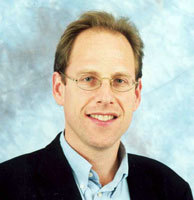 “Musical Preferences are Linked to Cognitive Styles,” David M. Greenberg, Simon Baron-Cohen [pictured here], David J. Stillwell, Michal Kosinski, Peter J. Rentfrow, PLoS ONE 10(7): e0131151. (Thanks to Neil Martin for bringing this to our attention.) The authors explain:
“Musical Preferences are Linked to Cognitive Styles,” David M. Greenberg, Simon Baron-Cohen [pictured here], David J. Stillwell, Michal Kosinski, Peter J. Rentfrow, PLoS ONE 10(7): e0131151. (Thanks to Neil Martin for bringing this to our attention.) The authors explain:
“Why do we like the music we do? Research has shown that musical preferences and personality are linked, yet little is known about other influences on preferences such as cognitive styles. To address this gap, we investigated how individual differences in musical preferences are explained by the empathizing-systemizing (E-S) theory. ”
BONUS: Some researchers suggest there is no clearly definable thing that ought to be called a “cognitive style”.
BONUS: Awkward moments run in the family

How many universes are necessary for an ice cream to melt?
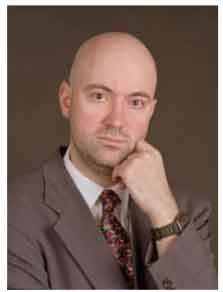 How many universes are necessary for an ice cream to melt? Asks Professor Milan M. Ćirković [pictured] of the Astronomical Observatory Belgrade, Serbia, in the Serbian Astronomical Journal, Vol. 166, page 55-59. His paper considers the possibilities of other universes where a soft ice cream, left to its own devices, might be generally more likely to freeze rather than to melt. In other words one (or more) where the arrow-of-time might point in a different direction than it does here. But although the author goes into substantial cosmological and mathematical detail, those readers hoping to find a purely numerical answer to his question (viz. expressed as an integer, e.g. 42) will probably, in this universe at least, be disappointed. Rather:
How many universes are necessary for an ice cream to melt? Asks Professor Milan M. Ćirković [pictured] of the Astronomical Observatory Belgrade, Serbia, in the Serbian Astronomical Journal, Vol. 166, page 55-59. His paper considers the possibilities of other universes where a soft ice cream, left to its own devices, might be generally more likely to freeze rather than to melt. In other words one (or more) where the arrow-of-time might point in a different direction than it does here. But although the author goes into substantial cosmological and mathematical detail, those readers hoping to find a purely numerical answer to his question (viz. expressed as an integer, e.g. 42) will probably, in this universe at least, be disappointed. Rather:
“Only on the truly global scale – i.e. in the multiverse – there is no thermodynamical asymmetry, no arrow of time. Only through an anthropic selection effect do we perceive one in our own cosmological domain. In a sense, the ice cream melts because such [a] state-of-affairs is necessary for life and intelligence (no to mention ice-cream makers!) to occur.” [author’s emphasis]
Also see (many-worlds related): ‘Would this paper exist if I hadn’t written it?’
Question: Can the word ‘universe’ legitimately have a plural – given that the ‘uni’ prefix asserts that there’s just one?

July 23, 2015
A Model of Motion Sickness
Takahiro Wada, Normia Kamiji, and Shunichi Doi of Ritsumeikan University recently examined an application of a model of motion sickness incidence (MSI) (which Wada, Kamiji, and others developed in a 2007 paper) to vehicle passengers. They generalized earlier work by including more types of motion — especially head rotation — and they used the model to examine the effect of head-tilt strategy on motion sickness:
Thus, the effect of the head tilt strategy on motion sickness was investigated by the proposed mathematical model. The head movements of drivers and passengers were measured in slalom driving. Then, the MSI of the drivers and that of the passengers predicted by the proposed model were compared.

Bonus: Motion sickness is often a Rotating Hell (not to be confused with Rotating HeII).

Medical trial of soap opera videos streamed to smartphones
The first medical effects of a soap opera series that streams to smartphones show no significant advantage over phone-texting clear medical messages, but the soap opera is popular, says this study:
“A randomized controlled trial of soap opera videos streamed to smartphones to reduce risk of sexually transmitted human immunodeficiency virus (HIV) in young urban African American women,” Rachel Jones, Donald R. Hoover, Lorraine J. Lacroix, Nursing Outlook, vol. 61, no. 4, July–August 2013, pp. 205–215.e3. (Thanks to Adrian Levitsky for bringing this to our attention.) The authors, at Northeastern University and Rutgers University, report:
Love, Sex, and Choices (LSC) is a soap opera video series created to reduce HIV sex risk in women.
METHODS: LSC was compared to text messages in a randomized trial in 238 high-risk mostly Black young urban women. 117 received 12-weekly LSC videos, 121 received 12-weekly HIV prevention messages on smartphones. Changes in unprotected sex with high risk partners were compared by mixed models.
RESULTS: Unprotected sex with high risk men significantly declined over 6 months post-intervention for both arms, from 21-22 acts to 5-6 (p < 0.001). This reduction was 18% greater in the video over the text arm, though this difference was not statistically significant. However, the LSC was highly popular and viewers wanted the series to continue.
CONCLUSION: This is the first study to report streaming soap opera video episodes to reduce HIV risk on smartphones. LSC holds promise as an Internet intervention that could be scaled-up and combined with HIV testing.
Here’s the pilot episode of the soap opera series:
Here’s the clinical trials registration for part of the project — a part which (the registration says) has not yet begun:
ClinicalTrials.gov Identifier: NCT02493647
This study is not yet open for participant recruitment.
Verified July 2015 by Northeastern University.
Estimated Enrollment: 912
Study Start Date: July 2015
Estimated Study Completion Date: March 2019
Estimated Primary Completion Date: December 2017 (Final data collection date for primary outcome measure)
PURPOSE: This study tests a 12-episode Internet-based, guide enhanced Love, Sex, & Choices (LSC) HIV prevention soap opera video series for smartphones or computers, in a randomized clinical trial among predominately at-risk African American urban women.
The following hypotheses are to be tested: 1) The LSC treatment arm will show lower unprotected sex risk, meaning lower frequency of unprotected sex (vaginal + anal) with high risk partners at 6 months post intervention compared to an attention control arm 2) The LSC treatment arm will show higher participation in HIV testing at 6 months post intervention compared to the control.

Marc Abrahams's Blog
- Marc Abrahams's profile
- 14 followers



